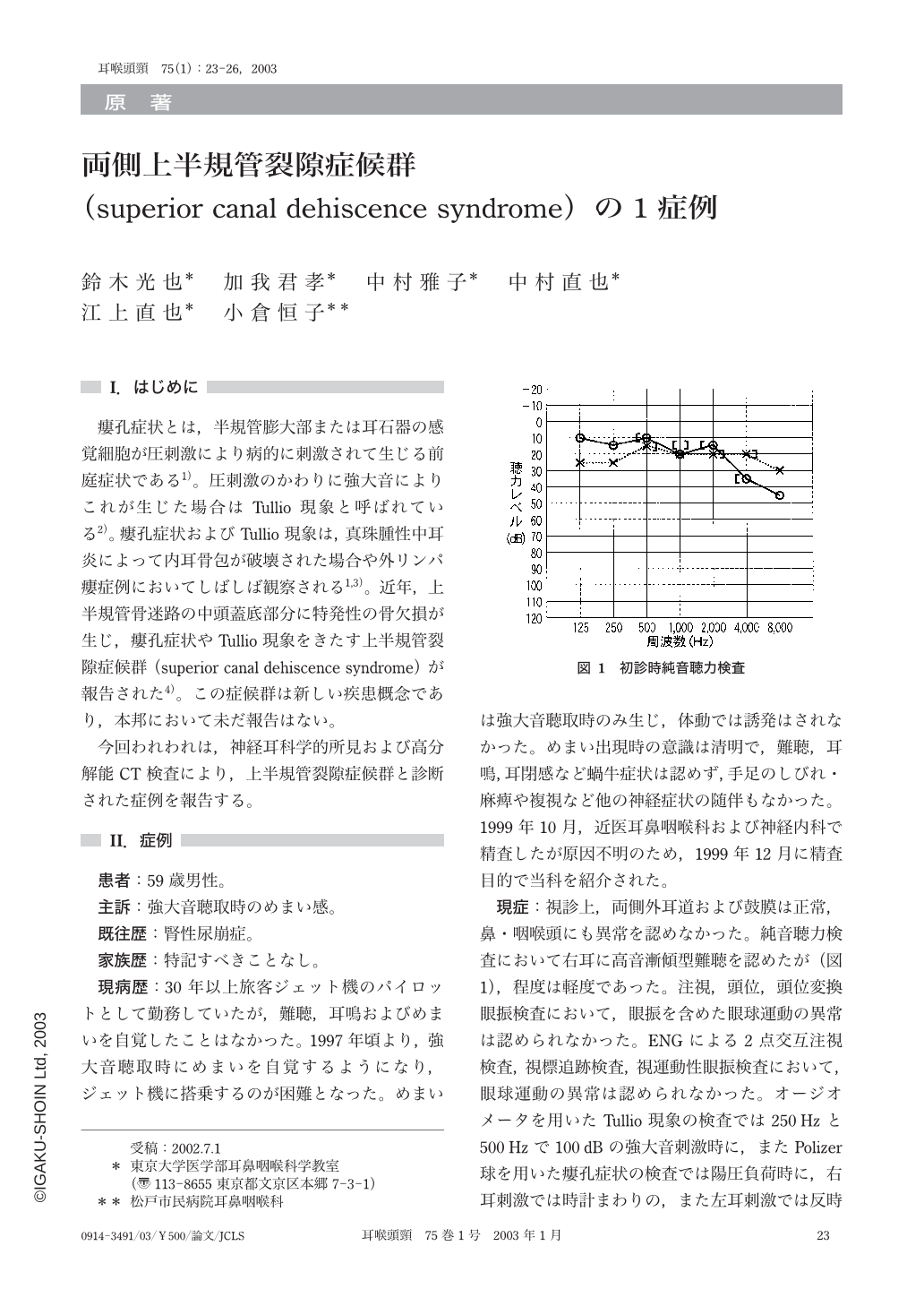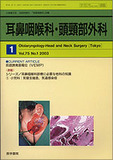Japanese
English
- 有料閲覧
- Abstract 文献概要
- 1ページ目 Look Inside
I.はじめに
瘻孔症状とは,半規管膨大部または耳石器の感覚細胞が圧刺激により病的に刺激されて生じる前庭症状である1)。圧刺激のかわりに強大音によりこれが生じた場合はTullio現象と呼ばれている2)。瘻孔症状およびTullio現象は,真珠腫性中耳炎によって内耳骨包が破壊された場合や外リンパ瘻症例においてしばしば観察される1,3)。近年,上半規管骨迷路の中頭蓋底部分に特発性の骨欠損が生じ,瘻孔症状やTullio現象をきたす上半規管裂隙症候群(superior canal dehiscence syndrome)が報告された4)。この症候群は新しい疾患概念であり,本邦において未だ報告はない。
今回われわれは,神経耳科学的所見および高分解能CT検査により,上半規管裂隙症候群と診断された症例を報告する。
This is the first documentation of a patient with superior canal dehiscence syndrome in Japan. A 59-year-old male working as a pilot began to experience sound-induced vertigo and oscillopsia in an airplane about 3 years ago. On examination,caloric responses of both ears were normal. Tone of 250 and 500 Hz at intensities of 100 dB in both ear evoked an upward deviation with torsion in both eyes. Threshold of a vestibular evoked myogenic potential(VEMP) was low in both ears. High-resolution computed tomography of the temporal bones revealed dehiscence of the bone overlying the superior semicircular canal bilaterally.

Copyright © 2003, Igaku-Shoin Ltd. All rights reserved.


